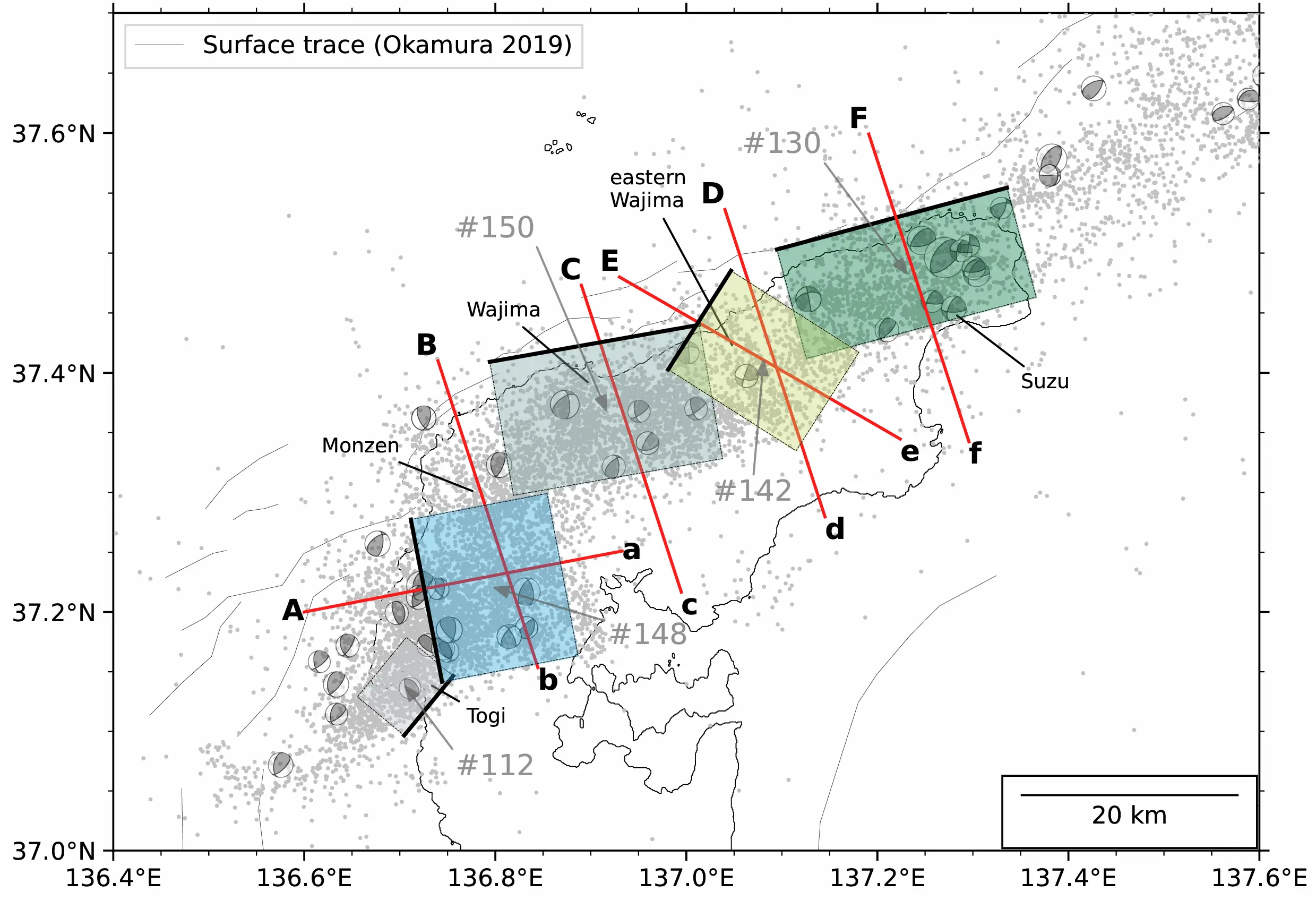New Co-authored Paper Published in EPS!
Aftershock distribution of the 2024 Noto Peninsula Earthquake, Japan, determined using a 3D velocity structure and uncertainty quantification
We published a new paper in Earth, Planets and Space about the aftershock distribution of the Mj7.6 Noto Peninsula earthquake on 1 January 2024.
This earthquake triggered extensive aftershocks. Previously, offshore aftershock locations were poorly constrained due to simplified velocity models. Our study used a 3D velocity model and Markov chain Monte Carlo to precisely determine hypocenters. Results show aftershocks occurred at 15 km depth or shallower, indicating the main rupture involved shallow submarine faults, contributing to tsunami generation. The aftershock distribution significantly differs from previous seismicity, suggesting a complex fault network across the peninsula influenced the Mj7.6 earthquake and subsequent activity, as suggested in Sawaki et al. (2025) .
Check the paper below for details!
- Shiina, T., H. Horikawa, Y. Sawaki, K. Sagae, and K. Imanishi (2025). Aftershock distribution of the 2024 Noto Peninsula Earthquake, Japan, determined using a 3D velocity structure and uncertainty quantification. Earth, Planets and Space, 77, 94. doi: 10.1186/s40623-025-02227-4 (Open Access)

